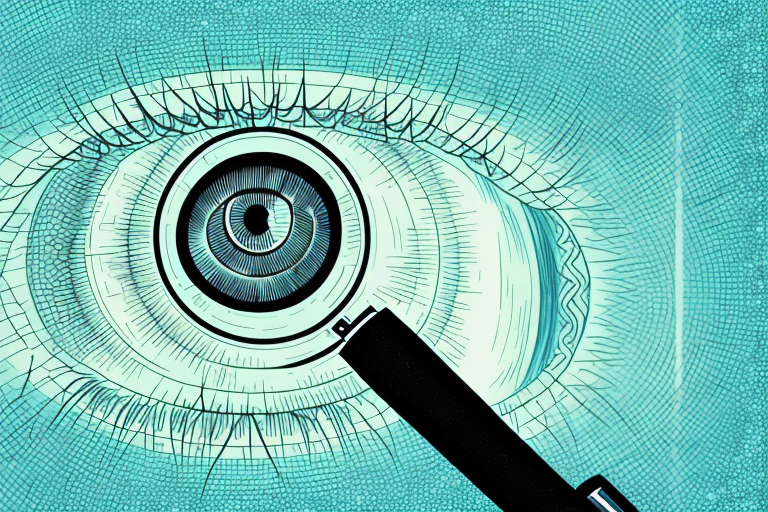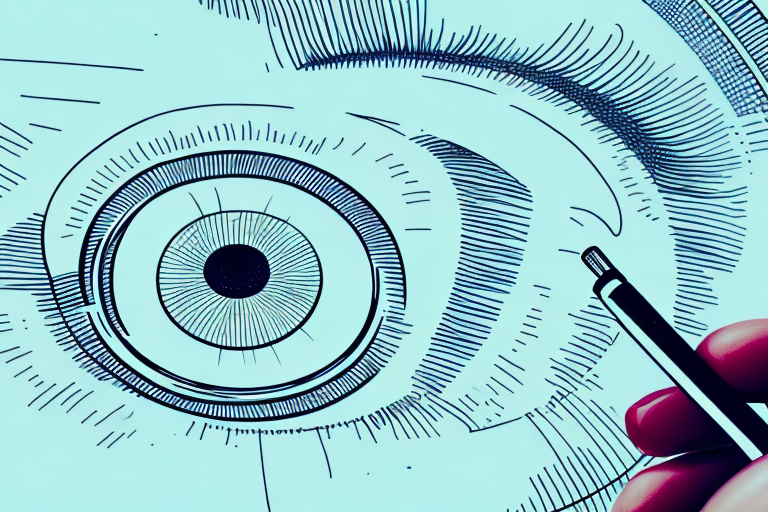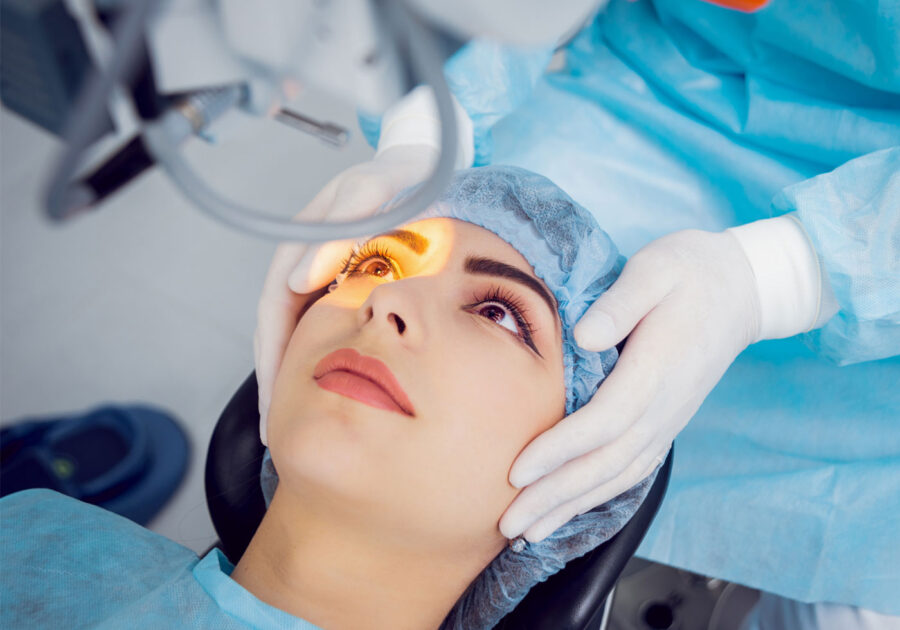Are you tired of always relying on your glasses or contact lenses to see clearly? If you are considering LASIK eye surgery, it’s important to understand that while it can be a life-changing procedure, it may not be suitable for everyone. Before making a decision, there are several factors that you should take into consideration. In this article, we will explore the top 5 factors that can help you determine whether LASIK is right for you.
Understanding LASIK Eye Surgery
Are you tired of wearing glasses or contact lenses? Do you want to improve your vision without relying on corrective lenses? Lasik surgery might be the solution for you!
What is LASIK?
LASIK (Laser-Assisted In Situ Keratomileusis) is a popular refractive surgery that aims to correct various vision problems, such as myopia, hyperopia, and astigmatism. It involves reshaping the cornea, the clear front part of the eye, and using a laser to improve the way light enters the eye.
LASIK surgery is a safe and effective way to improve vision for many people. In fact, it has a success rate of over 95% and is one of the most commonly performed surgeries in the world. Find out how a BiPAP machine or sleep apnea machine can provide specialized treatment for sleep apnea and respiratory conditions.
How does LASIK work?
During the procedure, the surgeon will create a thin flap on the cornea using a microkeratome or femtosecond laser. They will then use an excimer laser to reshape the underlying cornea tissue. The flap is then repositioned, and the eye is left to heal naturally without needing any stitches.
The entire LASIK procedure usually takes less than 30 minutes, and most patients experience little to no discomfort during the surgery.

Types of LASIK procedures
There are different types of LASIK procedures available, such as bladeless, wavefront-guided, and topography-guided LASIK. The type of surgery recommended for you will depend on your individual needs and the surgeon’s expertise.
Bladeless LASIK, also known as all-laser LASIK, uses a femtosecond laser to create the corneal flap instead of a microkeratome. Wavefront-guided LASIK uses a special device to measure the unique imperfections in each patient’s eye and create a personalized treatment plan. Topography-guided LASIK uses a detailed map of the cornea to guide the laser during the procedure.
Your surgeon will evaluate your eyes and recommend the best type of LASIK surgery for you.
After LASIK surgery, most patients experience improved vision within a few days and can return to work and other activities within a week. It is important to follow your surgeon’s instructions for post-operative care to ensure the best possible outcome.
See also – A Comprehensive Guide to Custom Wavefront LASIK
If you are interested in LASIK surgery, schedule a consultation with a qualified surgeon to discuss your options and determine if LASIK is right for you.
Factor 1: Your Eye Health and Prescription
When it comes to considering LASIK surgery, there are a number of factors that come into play. One of the most important is your eye health and prescription. Let’s take a closer look at some of the things you need to consider.
Common vision problems LASIK can correct
If you’re considering LASIK, it’s likely that you’re dealing with one of the most common vision problems that the procedure can correct. These include nearsightedness, farsightedness, and astigmatism. LASIK has been shown to be highly effective in treating these conditions, and many patients report a significant improvement in their vision following the procedure.
However, it’s important to note that LASIK is not effective for individuals with presbyopia, a condition that commonly affects individuals over the age of 40 and causes difficulty in reading small print up close. If you’re dealing with presbyopia, it’s important to explore other options for improving your vision.
Eye conditions that may disqualify you from LASIK
While LASIK can be an effective treatment for many vision problems, it’s not for everyone. There are a number of eye conditions that may prevent you from being eligible for the procedure. These include cataracts, glaucoma, keratoconus, and severe dry eye syndrome.
If you have any pre-existing eye conditions, it’s important to discuss them with your surgeon before making a decision about LASIK. Your surgeon will be able to assess your individual situation and help you determine if LASIK is the right choice for you.

The importance of a stable prescription
One of the most important factors to consider when it comes to LASIK is the stability of your prescription. It’s crucial to have a stable prescription for at least a year before undergoing LASIK surgery. This ensures that your vision is consistent and that the surgeon can accurately assess the degree of correction required.
If your prescription has been changing frequently, it may not be the right time for you to consider LASIK. Your surgeon will be able to help you determine if your prescription is stable enough for the procedure.
In conclusion, when considering LASIK, it’s important to carefully consider your eye health and prescription. LASIK can be an effective treatment for many vision problems, but it’s not for everyone. By discussing your individual situation with your surgeon, you can make an informed decision about whether LASIK is the right choice for you.
Factor 2: Age and Lifestyle Considerations
Ideal age range for LASIK candidates
Most LASIK surgeons recommend that candidates be at least 18 years old. This is because the eye continues to change and develop until then. However, the ideal age range for LASIK surgery is typically between 20 and 40 years old.
During this age range, the eyes have usually stabilized and are less likely to change significantly in the future. This means that the results of the LASIK surgery are more likely to be long-lasting.
It is important to note, however, that age alone is not the only factor that determines whether someone is a good candidate for LASIK. Other factors, such as the overall health of the eyes and the prescription of the patient, must also be taken into consideration.
How your occupation and hobbies may impact your decision
If you have a job or hobby that requires you to perform activities that could damage your contacts or glasses, LASIK may be a suitable option for you. For example, if you are a professional athlete or work in construction, LASIK can help you perform your job with greater ease and safety.
It is also important to consider whether you have a lifestyle that can accommodate the necessary post-operative care and resting period required for LASIK. LASIK is a minimally invasive procedure, but it still requires some downtime for the eyes to heal properly. This means that you may need to take some time off work or avoid certain activities for a period of time after the surgery.
It is also important to note that LASIK may not be suitable for everyone, especially those with certain medical conditions or eye diseases. Your LASIK surgeon will be able to advise you on whether LASIK is a good option for you based on your individual circumstances.
Pregnancy and LASIK
It is not recommended for pregnant or nursing women to undergo LASIK surgery, as hormonal changes can affect vision. It is best to wait until your hormones have stabilized before considering the procedure.
Additionally, if you are planning to become pregnant in the near future, it is important to discuss this with your LASIK surgeon. While LASIK is generally safe and effective, pregnancy can cause changes in the eyes that may affect the results of the surgery. Your surgeon can advise you on the best timing for your LASIK procedure based on your individual circumstances.
Factor 3: Cost and Financing Options
The average cost of LASIK surgery
The cost of LASIK surgery can vary depending on several factors such as the surgeon’s experience, location, and technology used. The average cost is around $2,000 to $4,000 per eye.
It is important to note that while the cost of LASIK may seem high, it is a one-time cost that can provide long-term benefits. Consider the cost of glasses or contact lenses over several years, which can add up to be much more expensive than LASIK.
Additionally, some LASIK centers may offer special promotions or discounts, so it is worth researching and comparing prices before making a decision.
Insurance coverage and LASIK
Most insurance plans do not cover the cost of LASIK surgery as it is considered an elective procedure. However, some employers may offer a Flexible Spending Account or Health Savings Account that allows you to use pre-tax dollars to pay for the surgery.
It is important to check with your insurance provider to see if they offer any coverage or discounts for LASIK. Some providers may offer a discount if you choose a specific surgeon or LASIK center.
If insurance coverage is not an option, consider setting up a payment plan or financing the procedure through a third-party provider.
Financing and payment plan options
Some LASIK centers offer financing and payment plan options to help make the cost of the procedure more manageable. Be sure to inquire about any available options and carefully review the terms and conditions before committing.
Some financing options may include low-interest rates or extended payment plans. It is important to understand the interest rates and fees associated with financing to ensure that you are able to pay back the loan in a timely manner.
Before committing to any financing or payment plan option, be sure to discuss your financial situation with a representative from the LASIK center to determine the best option for you.

Factor 4: Potential Risks and Complications
Possible side effects of LASIK
While complications from LASIK are rare, it is important to be aware of the potential risks. Some common side effects include dry eyes, glare, halos, and fluctuating vision. These side effects are usually temporary and can be resolved with proper aftercare and medication.
Risks associated with LASIK
There are some risks associated with LASIK surgery, such as overcorrection or undercorrection, corneal infection, and vision loss. These risks are rare, but it is important to discuss them with your surgeon before making a decision.
Factor 5: Finding the Right Surgeon
Researching potential LASIK surgeons
Not all LASIK surgeons are created equal. It’s important to do your research and find a qualified and experienced surgeon who uses the latest technology and techniques. Look for reviews and recommendations from previous patients and ensure that they have the proper credentials and certifications.
Questions to ask a potential surgeon
When meeting with potential LASIK surgeons, ask questions about their experience, success rates, and the technology used. Also, make sure to ask about their post-operative care and follow-up appointments. The more information you gather, the more confident you will be in your decision.
Final Thoughts
Before deciding on LASIK surgery, it’s important to consider the factors mentioned above carefully. If you feel confident that you are a suitable candidate, remember to do your research and find a qualified surgeon that you trust. While LASIK can be a life-changing procedure, it’s not a decision to be taken lightly. Take the time to make an informed decision, and you’ll increase your chances of achieving the vision you deserve.










